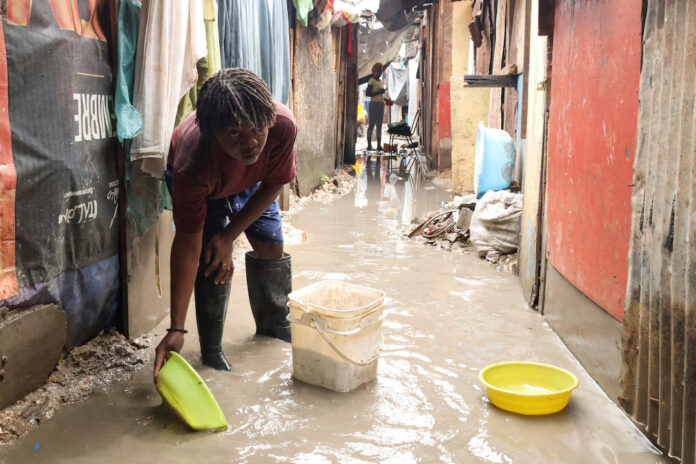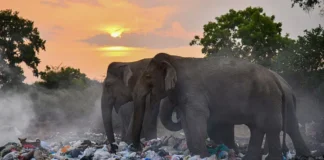
Hurricane Melissa continued to wreak havoc across the northern Caribbean on Wednesday, leaving nearly 30 people dead and triggering widespread destruction from Haiti to the Bahamas after striking Jamaica as the most powerful storm ever recorded on the island.
The hurricane slammed into Jamaica on Tuesday with sustained winds of 185 mph (298 kph), a Category 5 intensity that shattered previous records. The storm leveled homes, uprooted trees, and caused severe flooding, with authorities reporting that 77% of the country remained without electricity by Wednesday morning.
In Haiti, although Melissa did not make landfall, days of relentless rain led to catastrophic flooding. At least 25 people were killed, 10 of them children, and 12 remain missing, the country’s disaster management agency said.
Most of the deaths occurred in Petit-Goâve, where a river burst its banks, inundating homes and sweeping away residents. More than 1,000 homes were flooded nationwide, displacing nearly 12,000 people.
In the coastal city of Les Cayes, displaced families living in makeshift camps said the floods had made conditions unbearable. “If the hurricane comes on top of all the problems we already have, we’ll simply die,” said Fortune Vital, a resident separated from his family.
In Jamaica, AccuWeather estimated the damage and economic loss at around $22 billion, warning that full recovery could take a decade. The southwestern parish of St. Elizabeth was among the hardest-hit areas, where floodwaters washed up several bodies.
Prime Minister Andrew Holness toured the devastated region on Wednesday, visiting Black River Hospital, which had operated through the night without power. “It was the most terrifying experience in all my life,” one hospital worker said.
The Jamaican government has begun recovery operations but will keep shelters open through the week as thousands continue to arrive. Over 25,000 people have sought refuge, according to local officials.
Cuba also suffered extensive damage when Melissa made landfall overnight as a Category 3 hurricane near Guamá, about 40 kilometers west of Santiago de Cuba.
Authorities evacuated some 735,000 people, but at least 241 communities remain cut off, affecting more than 140,000 residents.
President Miguel Díaz-Canel warned of widespread agricultural losses as the country, already facing severe shortages of food, fuel, and medicine, grapples with the aftermath.
By Wednesday evening, Melissa had weakened to a Category 1 hurricane as it moved northeast through the Bahamas, where the government evacuated nearly 1,500 people in one of its largest operations ever.
Residents across the Bahamas and Turks and Caicos hunkered down, while Bermuda prepared for hurricane conditions expected Thursday.
Meteorologists say Melissa ranks as the Caribbean’s third most intense recorded hurricane and one of its slowest-moving, amplifying its destructive impact.
Scientists attribute the storm’s rapid intensification to record-high sea temperatures linked to global warming.
The Caribbean Community Climate Change Centre urged wealthy nations to increase funding to the U.N.’s “loss and damage” fund, saying Melissa highlighted the urgent need for climate justice and support for vulnerable nations.
International aid and rescue offers have begun pouring in, with several countries pledging cash, supplies, and emergency teams.
In Montego Bay, a resident recounted how rescuers broke into her flooded home to save her and her child. “All the trees my dad planted, every one of them is gone,” she said.
As Melissa churns northward, the full scale of its devastation across the Caribbean is only beginning to emerge.
Source: Reuters
Written By Rodney Mbua


















